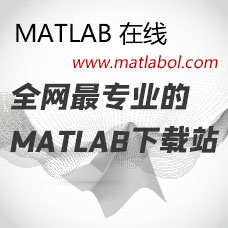-
基于C#的人事工资管理系统
一个简单的基于C#的人事工资管理系统的实现,数据库使用的是Sql Sever2005。实现了工资考勤等简单的管理
- 2020-12-08下载
- 积分:1
-
Reinforcement Learning An Introduction_Sutton-增强学习导论(文档+代码)
压缩包中包括Reinforcement Learning An Introduction英文与中文文档,还包括涉及的课程代码。
- 2020-11-27下载
- 积分:1
-
射频微电子学 非常经典的书籍
经典书籍:Razavi射频微电子学(中文版)经典书籍:Razavi射频微电子学(中文版)
- 2020-12-03下载
- 积分:1
-
基于MCGS组态软件的电梯监控系统设计
详细的叙述 如何通过MCGS组态软件来设计一个电梯监控系统。
- 2020-12-08下载
- 积分:1
-
电子秤proteus仿真+程序资料
本资源为基于51单片机的电子秤设计,里面有程序及电路图以及proteus工程,打开就能用,给大家参考之用
- 2020-12-11下载
- 积分:1
-
MFC界面优化,Tab与Button两种自绘控件并存
最终想要的界面效果如图中所示,整个对话框背景颜色可变,Tab选项卡背景颜色可变,Button的背景颜色可变。实际上Tab control包含四部分:标签、标签文字、标签文字背景、选项卡背景,四部分的颜色均可DIY。对于Button,同理。但对于两种控件,要想DIY控件背景颜色,相同点是必须开“自绘属性”,不同点是自绘的方式不同,所谓殊途同归。
- 2021-05-06下载
- 积分:1
-
牛顿迭代法matlab程序
几道例题,用牛顿迭代法解的三道关于非线性方程组的题目,文件中有matlab代码,仅供参考
- 2020-11-30下载
- 积分:1
-
信号与线性系统分析吴大正第四版答案全程导学及习题全解 (第四版)
《信号与线性系统分析(第4版)》是在1998年高等教育出版社出版的《信号与线性系统分析》(第三版)一书的基础上经修编而成的。 本版保留了原教材连续与离散并行、先时域后变换域的体系结构,对少量内容做了调整、增删;结合近几年来教学内容和方法改革的成果,重新编写了全书部分章、节,并选编了许多新的例题、习题。本教材论述清楚、概念明确、重点突出、层次清晰、便于教学。 《信号与线性系统分析(第4版)》包括:信号与系统、连续系统的时域分析、离散系统的时域分析、傅里叶变换和系统的频域分析、连续系统的s域分析、离散系统的z域分析、系统函数、系统的状态变量分析以及附录。各章配有不同层次的习题,以供选用。
- 2020-06-23下载
- 积分:1
-
FCM聚类算法matlab源代码
我现在这在用这个聚类算法,这个源程序写的很简洁,而且里面的注释很明白,我自己一直都在用哦
- 2020-12-05下载
- 积分:1
-
93-17年城市统计年鉴EXCEL
93-2017年城市统计年鉴EXCEL版,亲测可用,请放心下载!
- 2021-05-07下载
- 积分:1


